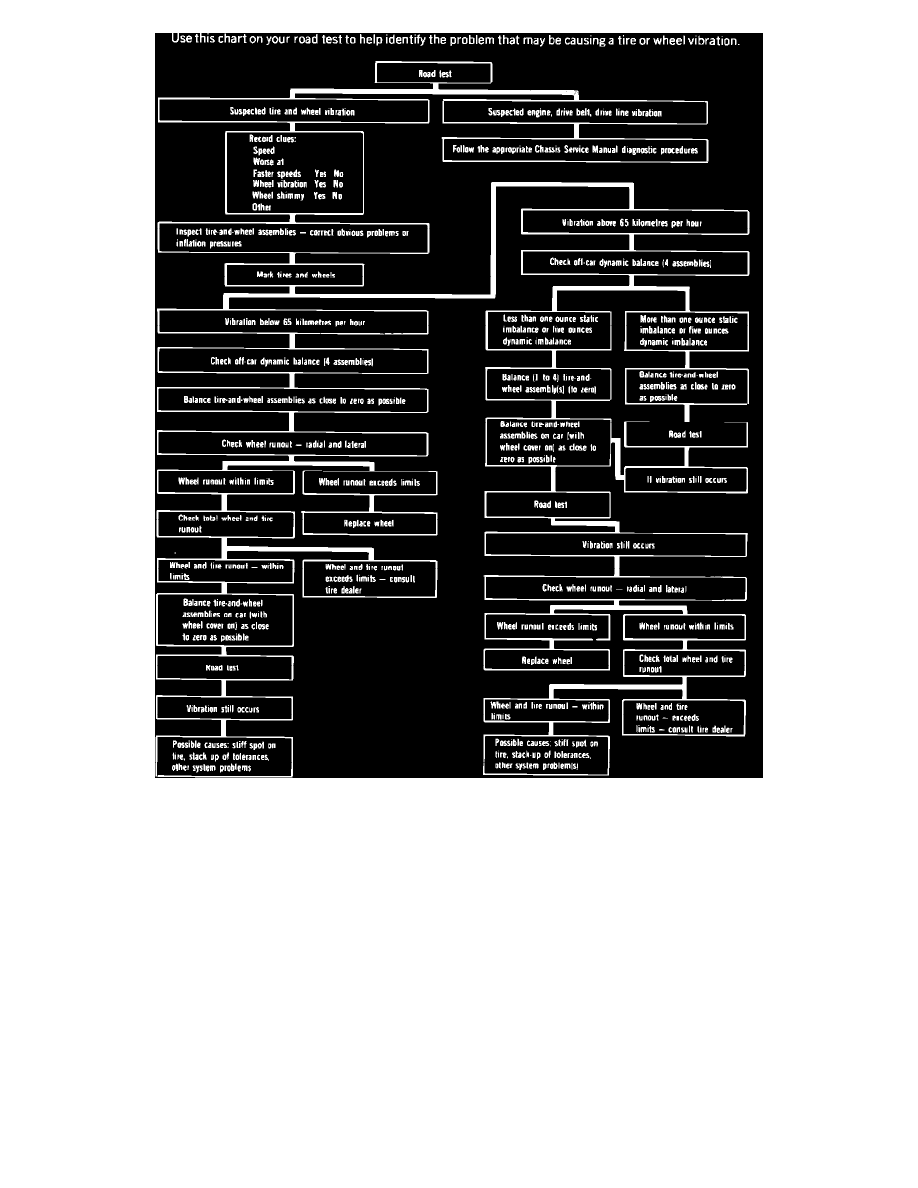Fiero L4-151 2.5L (1985)

DIAGNOSTIC CHART
DIAGNOSTIC DIRECTION
The first step in diagnosing tire and wheel vibration problems is a road test. Drive the car with the customer to be sure you understand the complaint.
Your objective during the road test is to isolate the system that is causing the problem. If you confirm a vibration, look for clues. (See "Diagnostic
Chart").
Fifty percent of tire and wheel vibrations are caused by tire and wheel imbalance. Some of the other fifty percent may be caused by excessive wheel
and/or tire runout, or drive line vibration.
While on the road test, drive the vehicle at a steady highway speed, then shift the transmission to neutral and vary the engine speed. If the vibration
remains constant, check the driveline for loose universal joints or a missing drive shaft weight. Once these causes have been ruled out, look for tire and
wheel vibration clues.
If a low speed, side to side waddle is felt in the whole car, treat it as a wheel and tire vibration. Because wheel vibration transfers, you will probably
have to inspect all four wheels for imbalance.
